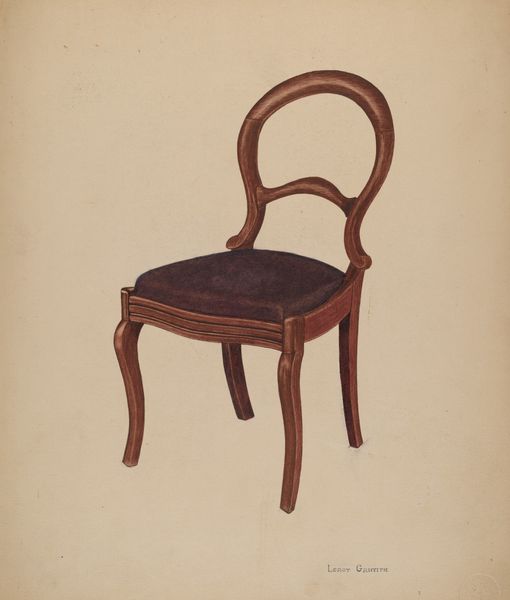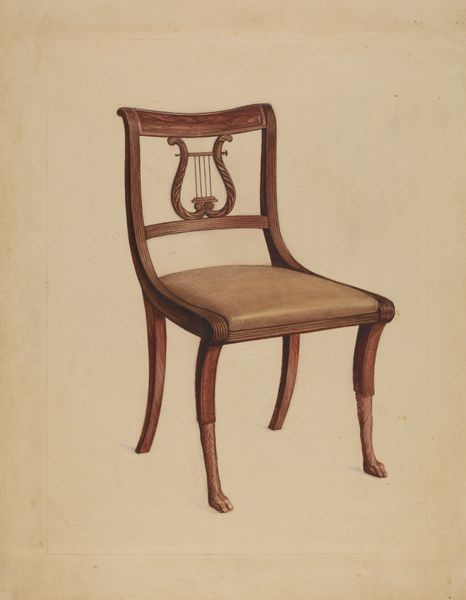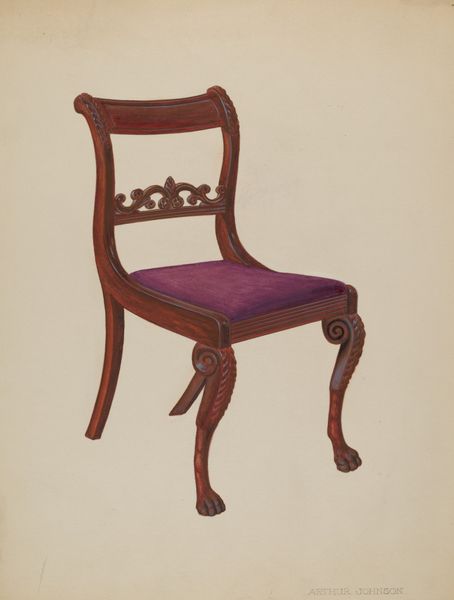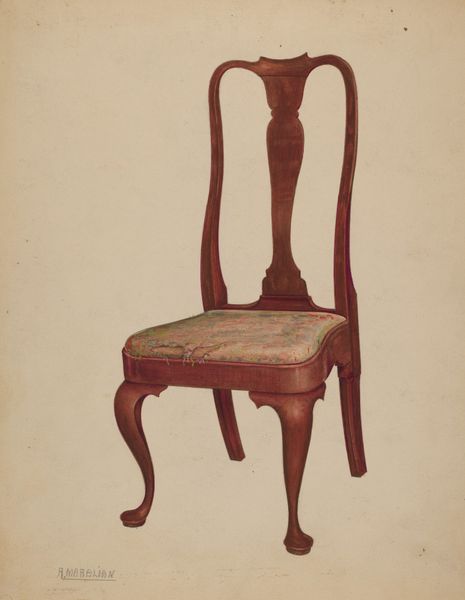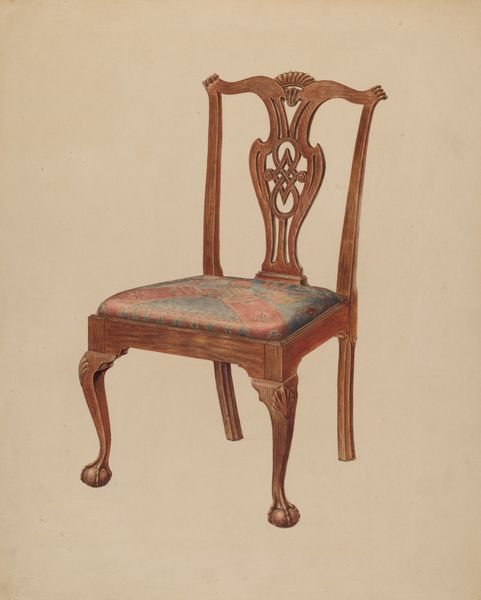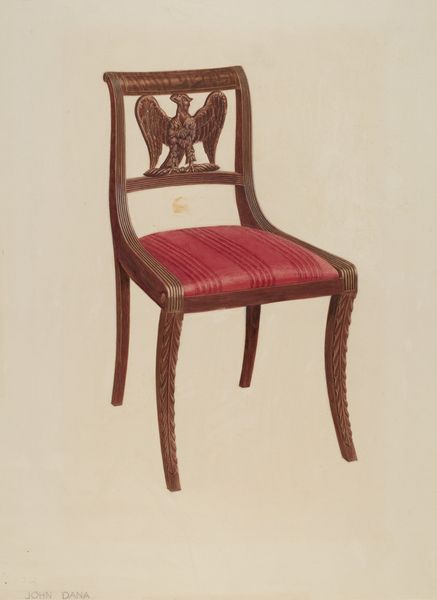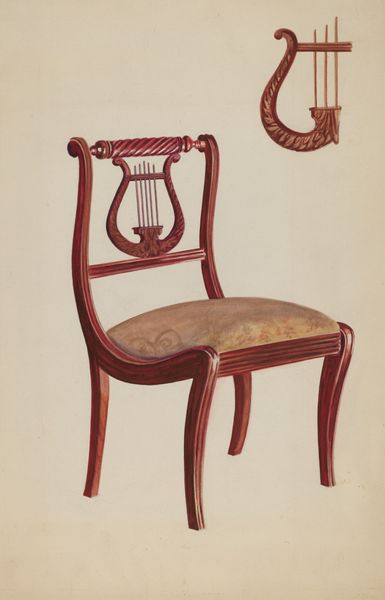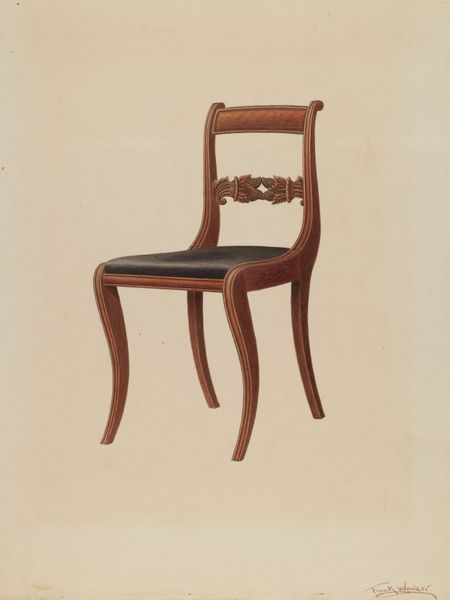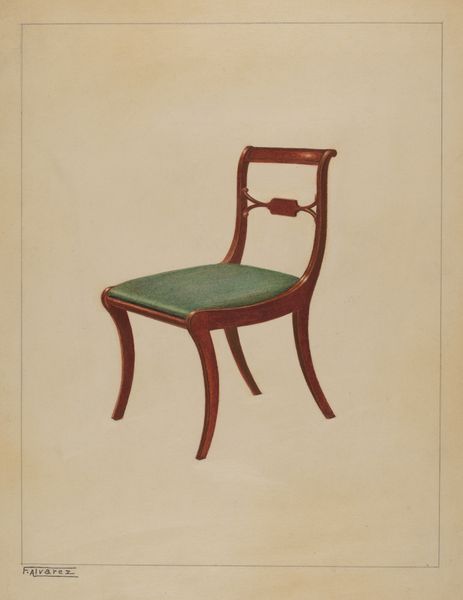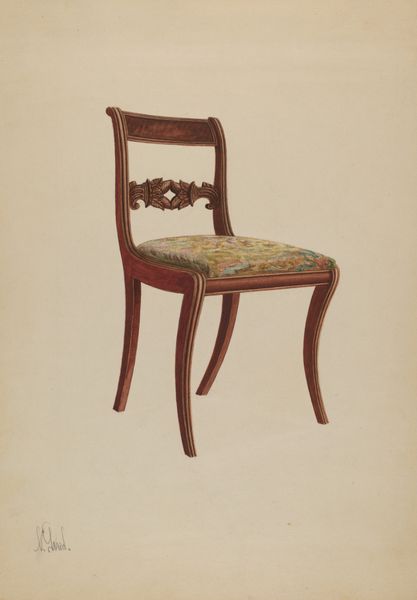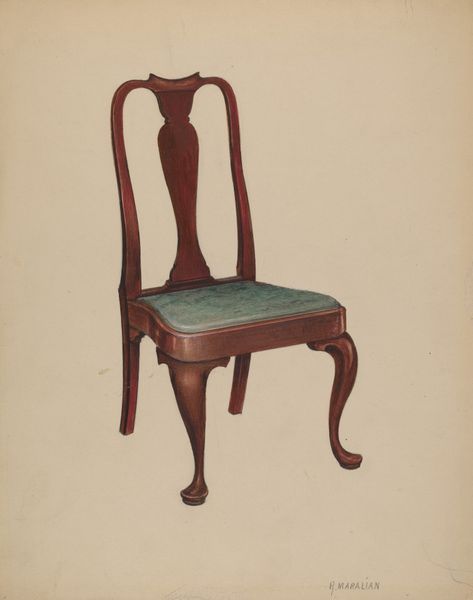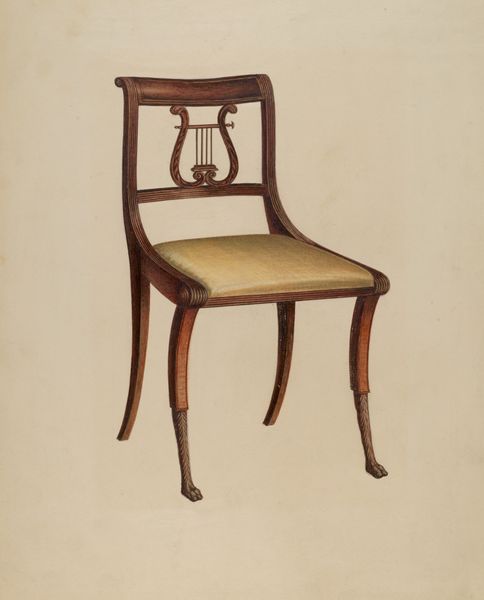
drawing, watercolor
#
portrait
#
drawing
#
water colours
#
watercolor
#
ceramic
#
watercolour illustration
#
academic-art
#
watercolor
#
realism
Dimensions: overall: 28.9 x 22.5 cm (11 3/8 x 8 7/8 in.) Original IAD Object: 32"high, 18 1/4"wide, 16 1/4"deep
Copyright: National Gallery of Art: CC0 1.0
Curator: Here we have Arthur Johnson's "Side Chair" from 1937, rendered in watercolor. Editor: My initial impression is one of poised stillness. The chair seems almost regal, though rendered in the humble medium of watercolor. It has an unexpectedly contemplative mood, as if it's awaiting an occupant burdened with anxieties. Curator: The use of watercolor is indeed fascinating, setting it apart from conventional furniture design depictions of the period. Johnson's meticulous attention to detail speaks to a deep understanding of the chair’s construction, the way the wood is carved, the fabric is stretched. Editor: I wonder, though, about the implied narratives surrounding domesticity in the 1930s. Who was this chair intended for, what power dynamics did it represent within the household? Was this perhaps aspirational, signaling a longing for upper-class refinement during a time of economic uncertainty? Curator: Absolutely, it’s about material culture as a reflection of social aspiration. This drawing also shows a detailed, careful application. The production process is clearly something Johnson thought about – notice the deliberate blending of color. Editor: Indeed, consider also the visual weight the artist gives to this single chair. By focusing on a single object, it seems as though Johnson attempts to amplify ideas of design and luxury—a commentary on class. Curator: The slight imperfections of the medium – the slight pooling of color, the variations in texture – also inject humanity into what could be seen as a somewhat stiff design. This is very likely something the designer pondered about too. Editor: The chair feels self-consciously alone. I keep wondering, what does its isolation convey about the sitters or occupants and their potential power within this domestic space? How can we use that isolation as a lens for how ideas of marginalization impact gendered, raced bodies within this space, for example? Curator: Well, that tension, I believe, is a testament to its complexity. There’s this delicate negotiation of function and form, high art, and design. Editor: Johnson's work grants us a look into the aesthetics, even the socio-political landscape, of its time through this functional object turned art. Curator: Indeed. It provides an appreciation for everyday artistry, the quiet craftsmanship.
Comments
No comments
Be the first to comment and join the conversation on the ultimate creative platform.
